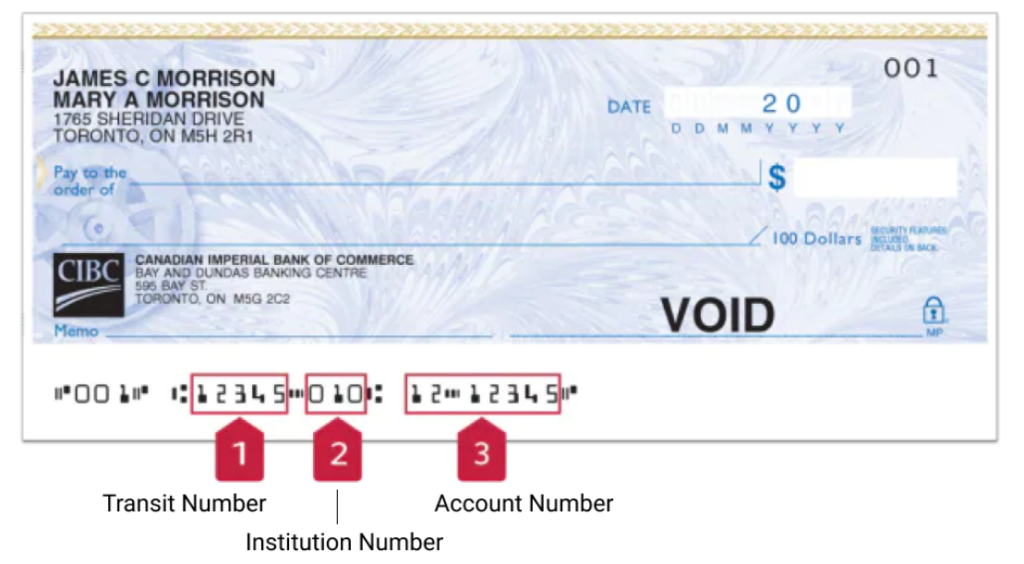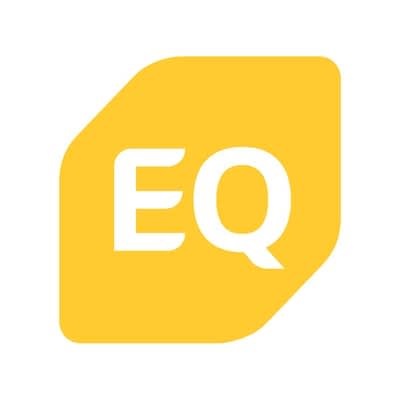If you’re ever asked to complete a direct deposit slip by your employer or set up an automatic bank draft, then you’ll usually need to provide your routing number along with several other key account details.
This authorizes the other party to either send or receive money to and from your bank account.
Today, I’m going to show you how to find your bank routing number in Canada, explain what it’s used for, and why it’s important.
Routing Numbers For Major Banks In Canada
Unlike your account number, which is totally unique, you may share your routing number with many other account holders at your bank. Your routing number consists of eight or nine digits and is a combination of your bank institution number and your bank transit number.
Before we jump into an in-depth explanation of how routing numbers work, I wanted to share a quick list of major bank institution numbers in Canada:
| Institution Name | 3-Digit Institution Number |
| RBC | 003 |
| BMO | 001 |
| Scotiabank | 002 |
| CIBC | 010 |
| TD Bank | 004 |
| National Bank | 006 |
| HSBC | 014 |
| Tangerine Bank | 614 |
You may notice that Tangerine Bank’s institution number doesn’t follow the trend of the other major banks. That’s because Tangerine Bank is a relatively new financial institution that offers 100% online banking. You can read a full review of Tangerine Bank here.
The bank applied for an institution long after the other more established banks had been in business, which is why its transit number starts with a 6 instead of a 4.
What Is A Routing Number?

Alright, now it’s time to back up a little bit and break down what a routing number actually is, why it’s used, and what it’s used for.
Your routing number is a combination of your three-digit institution number and your four to five-digit transit number. The combination of these two numbers makes up the eight or nine-digit bank routing number for your Canadian bank account.
Now, let’s take a second to break down the two numbers that make up your complete routing number.
Institution Number
In the table above, we provided you with the institution number for most of the major banks in Canada. However, every bank in Canada (big or small) has its own specific institution.
For instance, let’s just say that you live in Toronto and have a TD bank account (institution number 004). Now, pretend you have two friends on opposite sides of the country who also bank with TD. Sarah from Vancouver and Eric from Montreal would all have the same institution number of 004.
The best way to view an institution number is to think of it as a large road sign for a major highway. Whenever money is being transferred to or from the account, the institution number shows which bank the money is coming from or going into.
Transit Number
The transit number usually precedes the institution number and consists of four or five digits. While the institution number determines the bank that the funds are going to, the transit number determines the home branch of the bank account.
For example, take two TD bank locations – one in Vancouver and the other in Kelowna. Both of the banks would have the same three-digit institution number. However, each would have its own unique transit number associated with that branch.
Here’s another fact that’s worth noting:
You will have the same exact routing number as almost everybody else who also opened an account at your bank branch.
This is why transit and bank routing numbers in Canada aren’t as heavily protected. It’s not a big deal if anybody knows your routing number, as it’s relatively meaningless without the associated bank account number.
What Are Routing Numbers Used For?

Routing numbers are used any time that money is being transferred to or from a bank account. These numbers simply provide a kind of “path” for the funds to travel down.
Think of it like a street address. Your routing number is the “street” you live on, and your account number is your actual home address.
You’ll often be asked to provide your bank routing number in the following scenarios:
- Setting up an auto-draft payment for your rent
- Applying for direct deposit with your employer
- Linking your bank account as a payment method for your credit card
- Verifying your identity with a void cheque
How To Find Your Routing Number On A Cheque
The easiest way to find your routing number is to take out your chequebook and look at the MICR encoding line on the bottom of the cheque. The routing number should be the number found in the bottom left-hand corner of the cheque.
It should consist of a four to five-digit transit number, followed by a code symbol and then a three-digit institution number.
Here’s an example of how to find your CIBC routing number:

- Note – The number on the far left is the cheque number in your chequebook. This number is just used for your own accounting purposes so you can balance your chequebook. Each new chequebook starts over with a new set of numbers that go from 1 to 100.
How To Find Your Routing Number Without A Cheque
With online banking on the rise, many Canadians rarely (or never) use cheques and have no need for a chequebook. The best way to find your routing number without a cheque is to log into your online banking account.
All online banking portals should allow account holders to view account information, including:
- Your routing number
- Your account number
- The address associated with your account
- … and more
Many banks provide specimen cheques that you can print out and use in place of a traditional void cheque. Alternatively, some banks offer direct deposit slips with all of your account information (including your bank account routing number) already filled in. All you have to do is print and sign the forms.
How To Read A Cheque & Find Your Account Information

In case you’ve forgotten, here’s a quick refresher on how to read a cheque and find your account information.
1. Account Holder Information
The upper left-hand corner of the cheque should include the full legal name and mailing address of the account holder or business.
2. Date
The upper right-hand corner of the cheque will have a blank space for the cheque date to be marked. The cheque is not valid for deposit until this date.
3. Recipient Information
The top line in the center of the cheque is where you’ll name the individual or business recipient of your cheque.
4. Dollar Amount Line
Next, you’ll find the dollar amount line, where the cheque amount will be handwritten (i.e. – “one-hundred and fifty-one dollars”).
5. Dollar Amount Box
To the right of the dollar amount line, you’ll find a small box where the numerical amount of the cheque will be written.
6. Memo
The bottom left-hand corner of the cheque typically includes a small space for a memo about what the cheque was issued for.
7. Signature Line
The bottom right-hand corner of the cheque should include a signature from the individual or business issuing the cheque.
8. MICR Encoding Line
The strange font with the heavy ink is the MICR encoding line. It’s made of special magnetic ink that can be read by ABM machines and includes:
- The cheque number
- The routing number
- The account number
9. Endorsement Line (On The Back)
If you flip the cheque over, you’ll find a blank endorsement line. This should be signed by the individual who is depositing the cheque.
FAQs About Bank Routing Numbers
To wrap things up, here are a few quick answers to some of the most commonly asked questions I see regarding bank account routing numbers in Canada.
Do Savings Accounts Have A Routing Number?
Yes! All bank accounts in Canada have a routing number. This is true of both chequing and savings accounts. The only difference is that you won’t be issued a chequebook for your savings account. This is how many banks are able to set up automatic bank drafts to and from your savings.
Do Bank Routing Numbers Change In Canada?
It’s not uncommon for bank routing numbers to change. This typically happens when two banks merge into one bank. When this happens, account holders will be given a fair warning, and they’ll be notified about any changes to their routing and account numbers.
Is The Routing Number The Same as The Transit Number?
The transit number is part of the routing number. The transit number is four or five digits long and identifies the bank branch where the bank account was initially opened. The transit number makes up the first part of the routing number.
Is The Routing Number The Same As The Institution Number?
The financial institution number is part of the routing number. It’s a three-digit code that’s unique to each financial institution, and makes up the second half of the routing number.
When Do You Use Your Bank Routing Number in Canada?
Your bank routing number in Canada is typically used whenever you need to set up direct deposit or transfer funds from your bank account into another account.
What Is The Routing Number vs. Transit Number vs. Account Number?
Your routing number is an eight or nine-digit number that consists of both your transit and financial institution numbers. This number provides details about the bank and the bank branch that the account is associated with. Your account number is 100% unique and identifies the exact account at the institution.
Conclusion
Your bank routing number in Canada consists of your financial institution number as well as the bank branch number. This number may change periodically if your bank merges with another bank.
However, it should otherwise stay the same unless you close down your account and open an account at another branch.
Want to learn more about how to use cheques in Canada? Be sure to check out my easy guide to endorsing cheques in Canada next!





